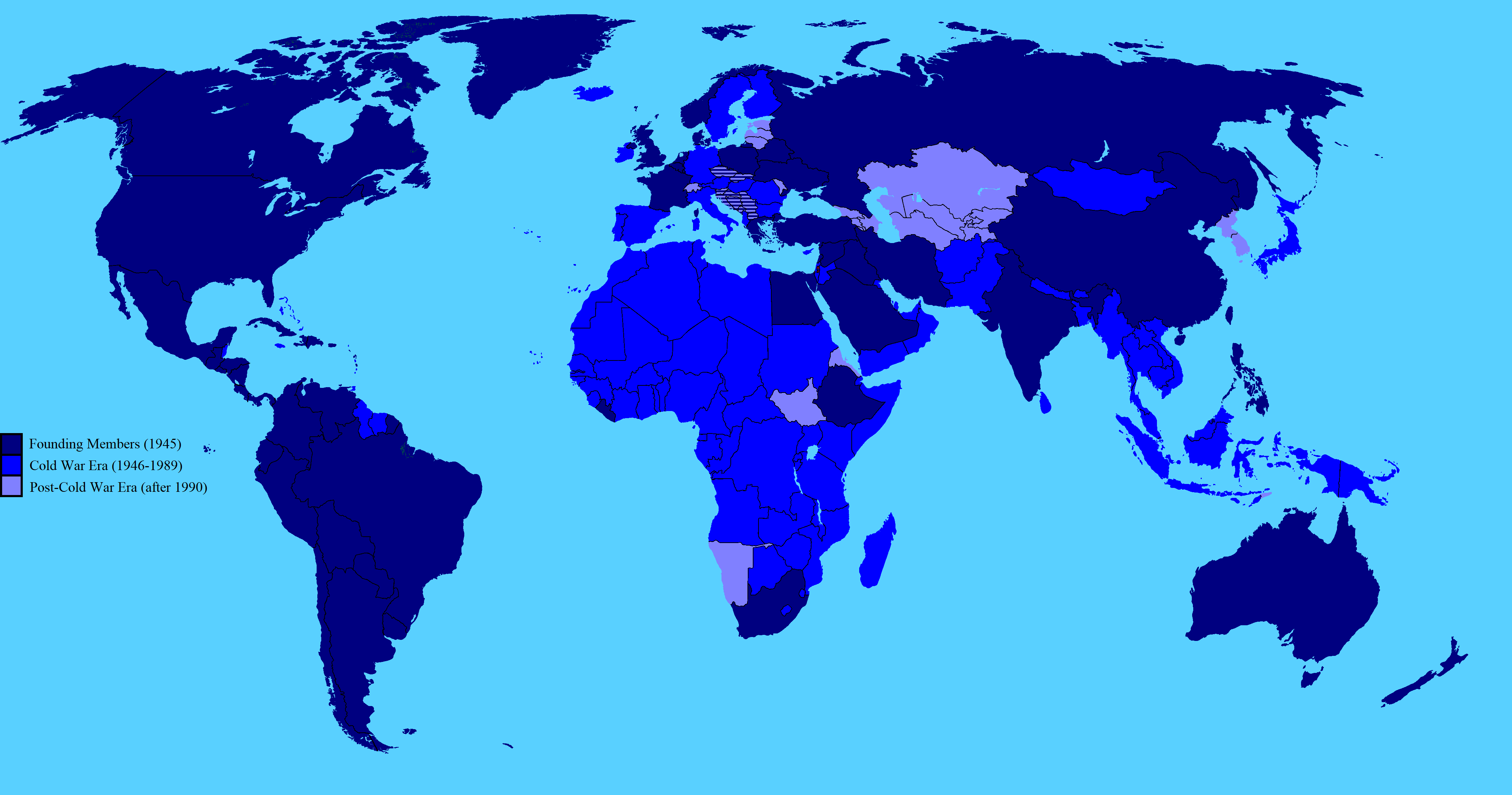Map of United Nations Enlargement


David Chen
Data Visualization Specialist
David Chen is an expert in transforming complex geographic datasets into compelling visual narratives. He combines his background in computer science ...
Geographic Analysis
What This Map Shows
The "World Map of United Nations Enlargement" vividly illustrates the growth of the United Nations (UN) membership since its establishment in 1945. The map highlights the countries that have joined the UN over the decades and notably marks Czechoslovakia and Yugoslavia with stripes, indicating their status as former founding members. This visualization is not just a representation of borders; it encapsulates a significant chapter in global cooperation, diplomacy, and geopolitical shifts.
Deep Dive into United Nations Membership
The United Nations was founded in the aftermath of World War II with a mission to foster international cooperation and prevent future conflicts. Initially, 51 countries came together to form this vital organization, reflecting a commitment to peace, security, and human rights. However, the world has changed tremendously since then, and so has the makeup of the UN.
As of 2023, the UN comprises 193 member states, a remarkable increase that underscores the evolving political landscape. This growth can be attributed to several factors, including decolonization, the dissolution of empires, and the rise of new nations. For example, following the collapse of the Soviet Union in 1991, 15 new countries emerged, many of which quickly sought UN membership to gain international recognition and legitimacy.
Interestingly, the map also highlights the phenomenon of state succession. Countries like Czechoslovakia and Yugoslavia, once prominent members of the UN, have since split into several independent nations. This shift is not just a geographic change; it reflects deep-rooted cultural, ethnic, and political dynamics. The dissolution of Yugoslavia in the 1990s led to a series of conflicts but also the birth of several independent states that now contribute to the UN's diverse membership.
Moreover, the map showcases the impact of global issues such as climate change, human rights, and security threats. As nations face these challenges, their roles within the UN evolve, highlighting the organization’s importance in facilitating dialogue and cooperation. Countries often join the UN to align with international norms and standards, seeking to enhance their global standing and collaborate on pressing issues.
Regional Analysis
When examining the map regionally, we can observe distinct trends in UN membership and participation. For instance, Europe, with its historical ties to the UN's formation, has seen a stable membership base. However, the 1990s brought significant changes with the introduction of new members from the former Yugoslavia and the dissolution of the Soviet Union. Countries like Slovenia, Croatia, and Ukraine joined the UN, showcasing a shift towards greater autonomy and international engagement.
In Africa, the UN has welcomed numerous new members following the wave of decolonization in the 1960s and 1970s. Nations such as South Sudan, which joined in 2011, illustrate the ongoing quest for recognition and support on the global stage. This regional analysis highlights that while Europe may have a historical context for its membership, Africa's journey reflects a continuous struggle for self-determination and global integration.
Meanwhile, the Asia-Pacific region presents a complex landscape of UN membership. Countries like East Timor gained independence in the early 2000s and quickly sought UN membership, emphasizing the organization's role in international legitimacy. However, some nations in this region, such as Taiwan, remain unrecognized by the UN due to geopolitical tensions, which raises questions about representation and fairness within the organization.
Significance and Impact
The significance of UN enlargement goes beyond mere numbers; it represents a collective commitment to addressing global issues that transcend borders. The inclusion of new member states reflects a dynamic world where collaboration is vital in tackling challenges like climate change, terrorism, and public health crises. The UN serves as a platform for dialogue, negotiation, and peacekeeping, crucial in a world marked by division and conflict.
As we look to the future, the trends in UN membership may continue to evolve. With rising global issues and shifting political landscapes, countries may seek to join in solidarity against common threats. The lessons learned from past enlargements could inform how the UN adapts to new members and their unique challenges.
In conclusion, the "World Map of United Nations Enlargement" serves as a compelling reminder of our interconnected world, where each new member adds to the rich tapestry of global governance and cooperation. Understanding this evolution helps us appreciate the complexities of international relations and the importance of the UN in promoting peace and stability worldwide.
Visualization Details
- Published
- September 26, 2025
- Views
- 42
Comments
Loading comments...